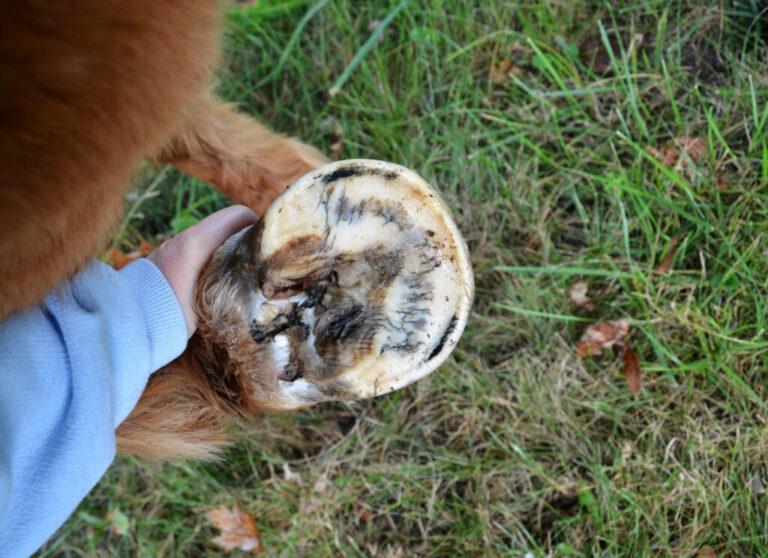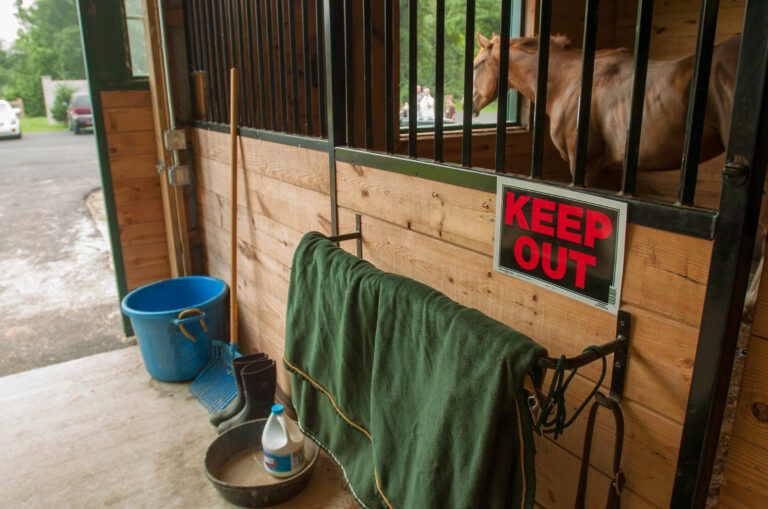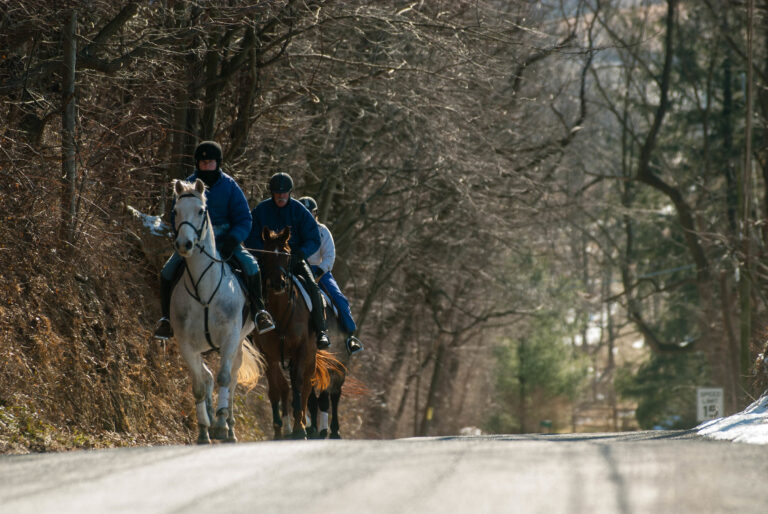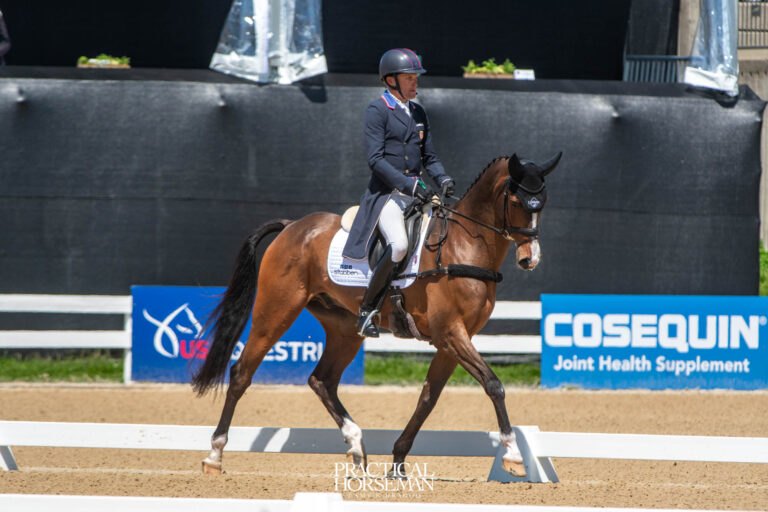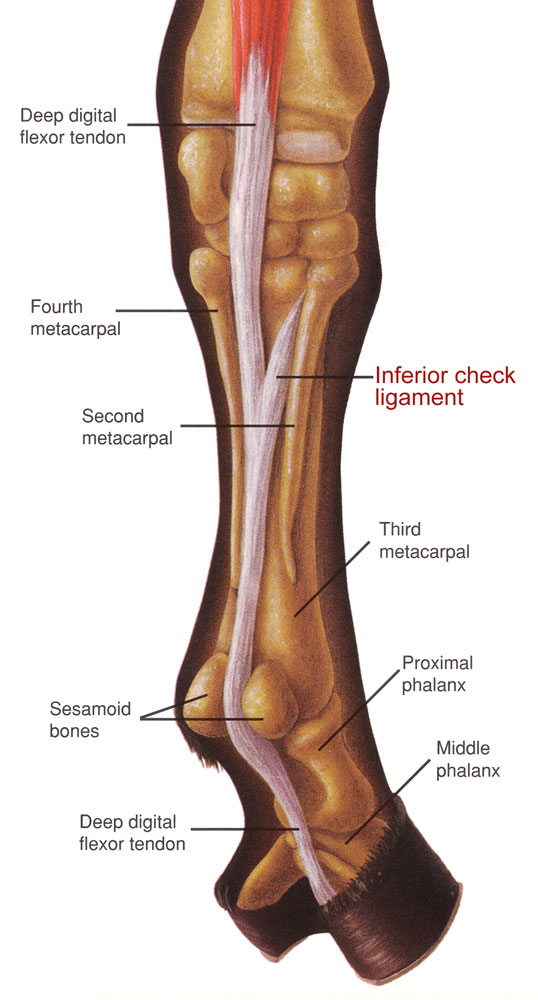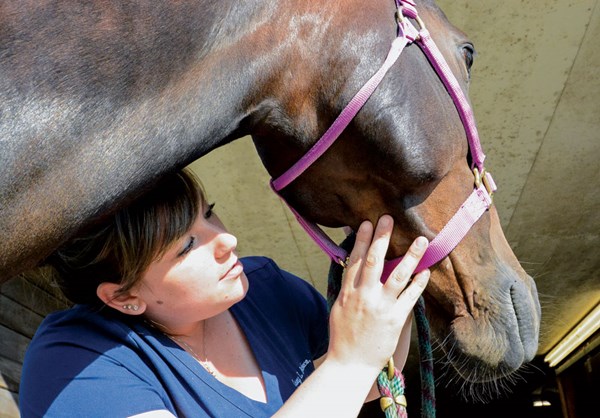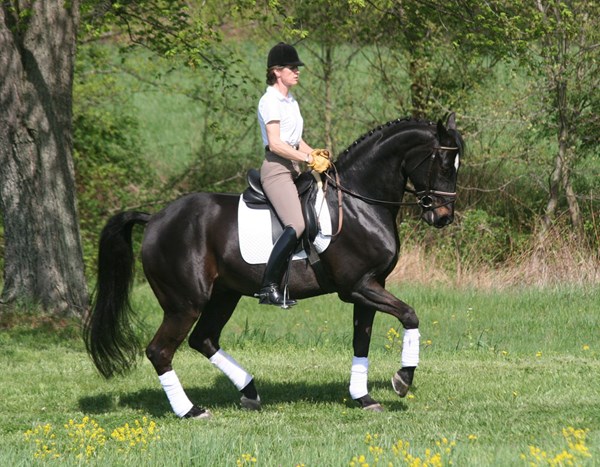Judges are always searching for young, athletic performance horses and breeding stock that can produce better and better sport horses. Breed shows provide the avenue for discovery of tomorrow’s talent, and judging at a breed show can be as fascinating as watching the Grand Prix. First, we assess conformation as the horse stands before us, and then we assess the movement when we see the horse in motion and see how he uses his body. When these qualities are looked at together, we hope to see the promise of future success in both performance horses and breeding stock.

This month, I’ll discuss how sport-horse judges assess the conformation of young prospects, and next month I’ll explain how they assess movement and general impressions. As the saying goes, “beauty is as beauty does,” but beautiful conformation is a good start because, in theory, it increases the likelihood of beautiful movement and soundness over time. Here’s how the judges look at conformation:
Beauty Isn’t Enough—But It’s a Good Start
Conformation goes hand in hand with movement because a horse with conformational weaknesses has to work harder when he eventually works under the rider. Correctness of conformation is hereditary, so the conformation score of dressage sport-horse breeding stock (mares and stallions, 4 years and older) is weighted more heavily (40 percent) than it is for dressage sport-horse prospect classes because we don’t want heritable faults to breed weaknesses that could cause unsoundness in a sport-horse career. The score for breeding-stock movement (gaits) is 50 percent of the score.

The conformation score for dressage sport horse prospects (fillies, colts or geldings, 3 years or younger) counts as 30 percent of the final score, and the score for gaits is 60 percent of the final score. More emphasis is put on gaits, but we still look for harmonious conformation as a predisposition to soundness and the potential for trainability and performance.
The final category to be judged, the general impression, counts as the last 10 percent of the score for both breeding-stock and sport-horse-prospect classes. The criteria for the dressage sport horse breeding stock includes masculinity or femininity.
Judges primarily look at conformation to know if each horse is capable of doing the job we expect of him as a future dressage sport horse and if our mares and stallions have the qualities necessary to produce suitable offspring. Each horse should be able to develop into an athlete that will be able to carry a rider with as much ease as possible.
For both the conformation and movement, young horses are shown on a triangle so they can be seen from all perspectives. (See “The Triangle: A Tool for Quick, Accurate Assessment.”)
Judging Conformation
As a horse comes into the breed ring and stands at the peak of the triangle, the judge has only three minutes to make a total assessment. And yet, I take my time as I look at the horse standing in front of me. It is like meeting a person for the first time. One allows the person to make an impression. With horses, I let the horse talk to me. I’m watchful of body language. Horses, like people, give you a sense of who they are by the calm, soft eye and the noticeable confidence and security. They are interested in the world around them but don’t lose their composure. Of course, the show atmosphere can be challenging, but even when a horse is excited it’s possible to observe his temperament to a degree.
Then there are the all-important details. I start with the head, neck, shoulder and withers. Then I look at the body, including the saddle position (the place behind the wither where the saddle will be placed), back, loin, croup, hips and, finally, I look at the legs and feet.
This is what we look for in a dressage sport horse. We have a picture in mind of what our ideal horse looks like. We should not forget, however, that there is no horse with perfect conformation. Therefore, judges must look at each horse and determine where on the scale the horse fits. Is he good or less than good? Or is he more toward excellent? Remember, excellent conformation is still not perfect.
The conformation assessment is the time when the judge gets her first impression and, like any first impression, it influences the final opinion strongly. But judges must remain open-minded to adjust the assessment when the horse shows us more or less athleticism in motion than we expected. I have to acknowledge that I have been surprised plenty of times.
The Triangle: A Tool for Quick, Accurate Assessment

Each side of the triangle is 30 meters, and a smaller triangle with sides of 15 meters is within the large one. The small triangle is used for the walk and the large one for the trot. The peak of the triangle is where the horse stands for inspection before the judge evaluating conformation. Each side of the triangle is useful in showing the important aspects of the walk and trot. As the horse walks away from the judge on the small triangle, she sees the view from behind: correctness of travel, hind-leg straightness, alignment of the steps, articulation of the joints, the swing of the tail. When the horse trots away from the judge, she notices the engagement and an active depart into the trot. The middle line of the small triangle, where we see the profile of the horse in walk, shows the clear four-beat walk rhythm, freedom of the shoulders and haunches and the ground-covering marching quality with regularity. The middle line of the large triangle, where we see the trot in profile, shows us correct rhythm, regularity, articulation of all joints, freedom of the shoulders and haunches and an elastic, swinging back. We would also like to see some natural impulsion and engagement that create a degree of suspension. Depending on the horse’s age, we are also looking for some upward thrust so that it is easier for him to develop roundness through the whole topline, giving the tendency to develop more pronounced self-carriage.
As the horse comes back toward the judge, she has an opportunity to observe the front legs for correctness in their traveling mode. Judges should be alert and prepared to move quickly out of the way when the horse travels on this line. Young horses—even well-trained ones—are not predictable in strange, exciting places, so judges have to be quick on their feet at times.
Five Points to Consider

1. A beautiful head is a definite attraction for every horseperson. We want to see a well-shaped head in proportion to the body set onto the neck with a well-defined throatlatch. We want a calm, big, dark eye that is alert and a well-shaped mouth.
Why are these qualities important? If the head sits well onto the neck with a properly defined throatlatch, the rider will have no trouble flexing the poll laterally and longitudinally. The calm, alert eyes mirror willingness, intelligence and honesty. Aberrations of the mouth, such as a small mouth or a parrot mouth, can create problems with eating and fitting the bit (especially when a double bridle is required in the horse’s international future).
2. The neck should be well-shaped and of moderate length. It should be muscular on top and concave on the bottom line. The ideal neck comes out of the shoulders uphill, rather than being low set at the wither or shoulder. The poll should give the impression of a horizontal plateau. We want an open connection at the throatlatch that’s neither too thick nor too thin.
Why are these qualities important? A well-set neck makes it easy for the rider to mold the horse into a rounded, stretching-to-the-contact frame. The shoulders of the horse will not be inhibited when he is ridden into an uphill connection. That can be difficult if the neck is set too low. An open throatlatch allows the horse to flex the poll properly. If it’s too thick, the horse can’t yield easily and might have difficulties breathing. If it’s too thin, the horse might have a tendency to collapse the neck at the poll, coming behind the vertical and making evasion easier.
3. We want to see well-defined withers that slope well into the horse’s back. The shoulders should be long, sloped and well angled. We would like to see an open angle from the point of the shoulder to the elbow. The elbow should be free, not tight.
Why are these qualities important? The withers keep the saddle in place, preventing it from sliding onto the horse’s forehand. The forehand of the horse already bears more weight by nature, so we want the rider to sit behind the wither for the comfort of the horse and better influence over the hindquarters. The shoulders and the elbow must have room to move freely. The open angle from point of shoulder to elbow allows the horse to lift and reach his front legs freely forward. A tight elbow inhibits the front leg from an upward and forward reach. This problem usually goes hand in hand with a closed angle of the shoulder.
4. As we look at the frame of the horse, we want to see a good topline from poll to tail, including a strong back and loin with a well-developed croup. The frame should be harmonious with the front, middle and hindquarters in proportion. We want to see a deep heart girth.
Why are these qualities important? A deep heart girth is usually a sign of adequate lung capacity and air intake. It also gives the rider a place for the leg. When the back is weak, low and sunken, it is difficult to fit a saddle, and the rider feels like she sits on a trampoline. When the back is too short, the saddle sits very close to the loin and causes the horse difficulty in being supple in lateral work. It can also be uncomfortable for the rider because the short back has less swing.
A back that is too long can cause the opposite problem. The horse can be too wormy and difficult to stabilize. Control over the hindquarters of the long-backed horse is difficult because the rider is too far away to influence them easily. A wide, short and well-muscled loin is ideal. The lumbosacral joint in the loin area is one of the most important joints in the horse’s body because it is responsible for giving the rider the advantage of a strong connection to the hindquarter. Well-developed muscling in the loin area and the back creates a bridge of muscle as the energy is sent forward from thrusting hind legs through the swinging back to the bit.
A well-shaped croup is important and also partly responsible for the weight-bearing functions. The point of the croup should be the same height or lower than the top of the wither, giving the horse an uphill appearance. The angle from the wing of the pelvis to the hip joint to the stifle should allow plenty of room to open and close those joints when in motion. The well-proportioned horse is rectangular—a little longer than he is tall.
5. Finally, we look at the legs. We want to see a well-muscled, long forearm with short cannon bones and large, well-defined, dry (with no swelling or signs of fluid) joints. The pastern should have some slope and not be too short or too long. We want strong, well-shaped feet. The legs should give the impression of vertical pillars when viewed from the front and back.
Why are these qualities important? Crooked legs break down more easily under stress because the joints continuously get twisted when in motion. The long forearm with a short cannon bone gives ideal reach of stride. Toeing in or out causes paddling of the lower legs and, at times, interference when the horse travels. The horse that is over, back or tied in at the knee has a weakness that, again, could cause a shorter career in dressage. As for the feet, the old saying expresses it all: bad feet, no horse.
In the hind legs, we want a well-angled, long hipbone, a femur well muscled and large, clean, dry hocks. The hind legs should give the impression of vertical pillars. Cow hocks twist outward and put strain on the joints, but they are present in some successful sport horses. Sickle hocks are very weak and wobbly, and offer less carrying power. The size of bone should be in proportion to the body type. The pastern should be elastic but not overly long or sloped.
Why are these qualities important? The hind legs and the hindquarters are the engine of the horse. Straight legs (as seen from standing behind the horse) with correct angles are better for a dressage sport horse’s future. Hind legs with insufficient angle in the hocks give a stiff backward push, making lowering of the hindquarters difficult. Twisting hocks are never as sturdy and strong and they limit carrying capacity.
Next month Fore will look at judging young horses in motion.

Lilo Fore is an FEI 5* judge. She has been a member of the ground jury for numerous U.S. Equestrian Team selection trials, the Pan American Games, the World Equestrian Games and the Olympic Games. She is also an FEI “C” judge for Para-Equestrian and a USEF “R” judge for sport horse. She was a founding member of the USDF Instructor Certification Program and is currently an examiner and the chair of the program. She has chaired or been a member of numerous committees for USDF and USEF and is a successful rider, trainer and coach. She owns and operates Sporthorse America, a dressage training facility located in Santa Rosa, California.


